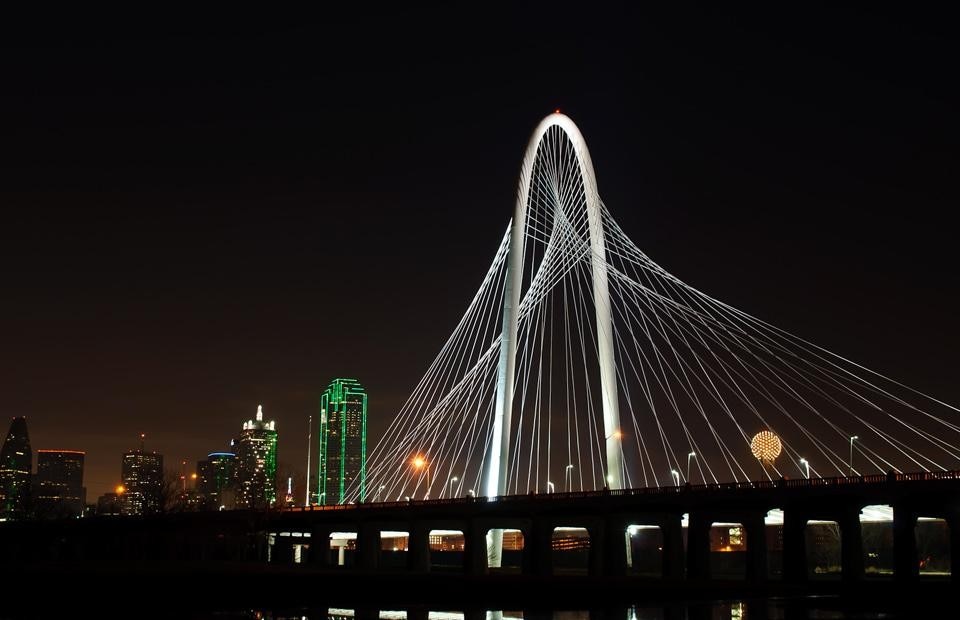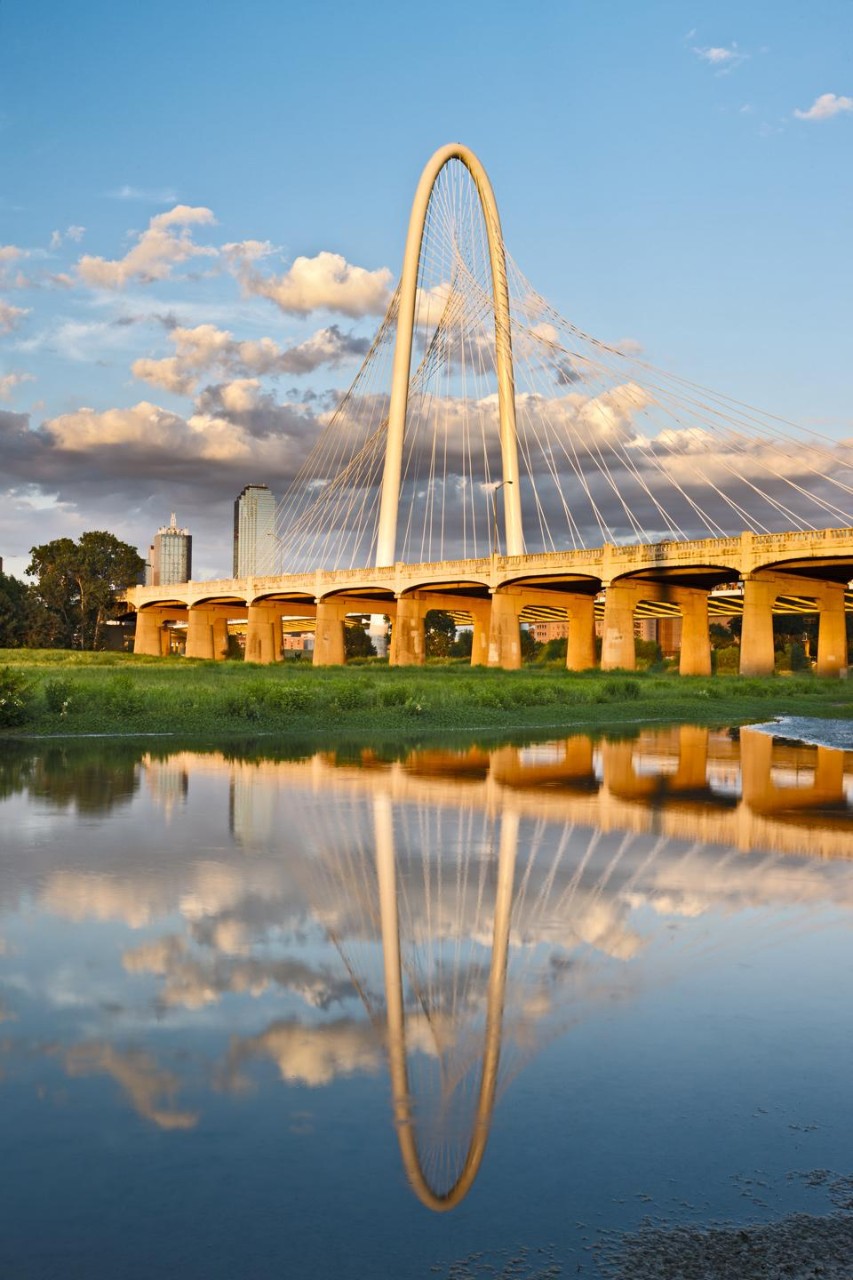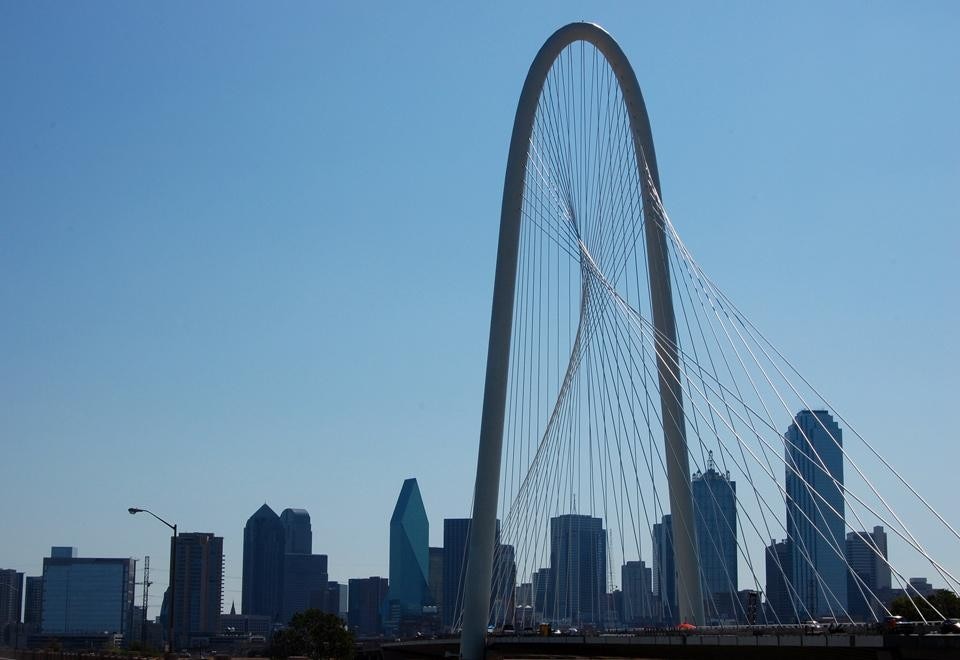Spanning the Trinity River, the Margaret Hunt Hill Bridge connects Downtown to West Dallas, and aims to reconnect the city with its outer boroughs. Construction began in July 2007, but the plan for the bridge dates back to the late 1990s, when city officials first saw the need to promote an alternate route of transportation from downtown area to West Dallas. Calatrava was selected by the city at the suggestion of Texas-based architecture firm Halff & Associates.
Dedicating much of his early practice to bridge and train design, Calatrava's focus on connectivity through engineering and design has become a leitmotif throughout his career. This bridge is a formal culmination of a series of previous projects including a design for the atrium of Allen Lambert Galleria at Brookfield Place in Toronto, Canada (1992); the L'Umbracle parking structure at the Ciutat de les Arts i les Ciències in Valencia, Spain (1996); and most recently his three bridges project in Reggio Emilia, which all use a similar vernacular, modified and articulated throughout the years.


This is the first of three planned bridges by Calatrava for the city of Dallas. Currently in development is a pedestrian walkway and plaza, which will further connect West Dallas to the burgeoning Design District in Downtown. The Downtown Dallas 360 plan also includes projects by Thomas Phifer and Thom Mayne's Morphosis, adding to the city's built landmarks by I.M. Pei, Renzo Piano, Norman Foster, and Rem Koolhaas. Danielle Rago (@danielle_rago)
Like Saarinen's St. Louis' Arch, which was built as a monument to westward expansion, the Margaret Hunt Hill Bridge was built as a connector to encourage development and expansion into satellite neighborhoods of the city


Sahil: G.T.DESIGN's Eco-conscious Design
At Milan Design Week 2025, G.T.DESIGN will showcase Sahil, a jute rug collection by Deanna Comellini. This project masterfully blends sustainability, artisanal craftsmanship, and essential design, drawing inspiration from nomadic cultures and celebrating the inherent beauty of natural materials.









